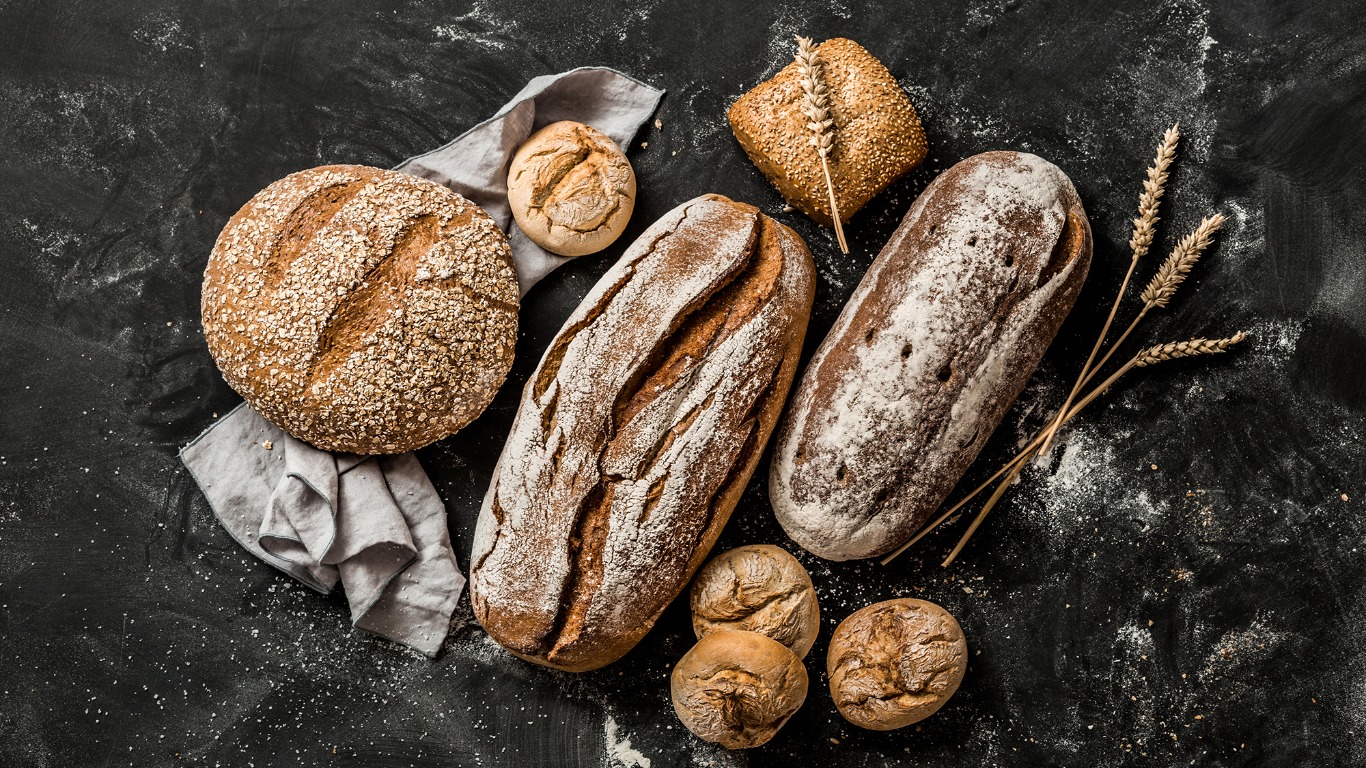How to make bread
In recent years, there’s been a massive resurgence in ‘real’ bread – artisan breads made naturally and without artificial ingredients. They are now widely available to buy but this taste for good bread has also caused an uplift in bread-making at home. If you’re a novice, begin with simple recipes, then as you become more confident, be more adventurous. Our in-depth guide will tell you everything you need to know about how to make bread.
What tools and equipment do I need?
You don’t need lots of fancy equipment to make bread so if you’re just starting out, begin with the basics.
Your hands
Your hands are the most important tool! As you learn to make bread, it’s the feel of the dough which will tell you if it’s at the right stage. If you’re lucky enough to have a stand mixer or electric hand whisk with a dough hook attachment, this will take the hard work out of kneading the dough. Otherwise, just a good-sized mixing bowl will do the job.
Scales
Weighing scales are important – bread-making is part science and part art, and just like when you’re baking a cake, accurate measurements are very important.
Scraper
A plastic scraper or large spatula makes it easier to remove dough from a bowl.
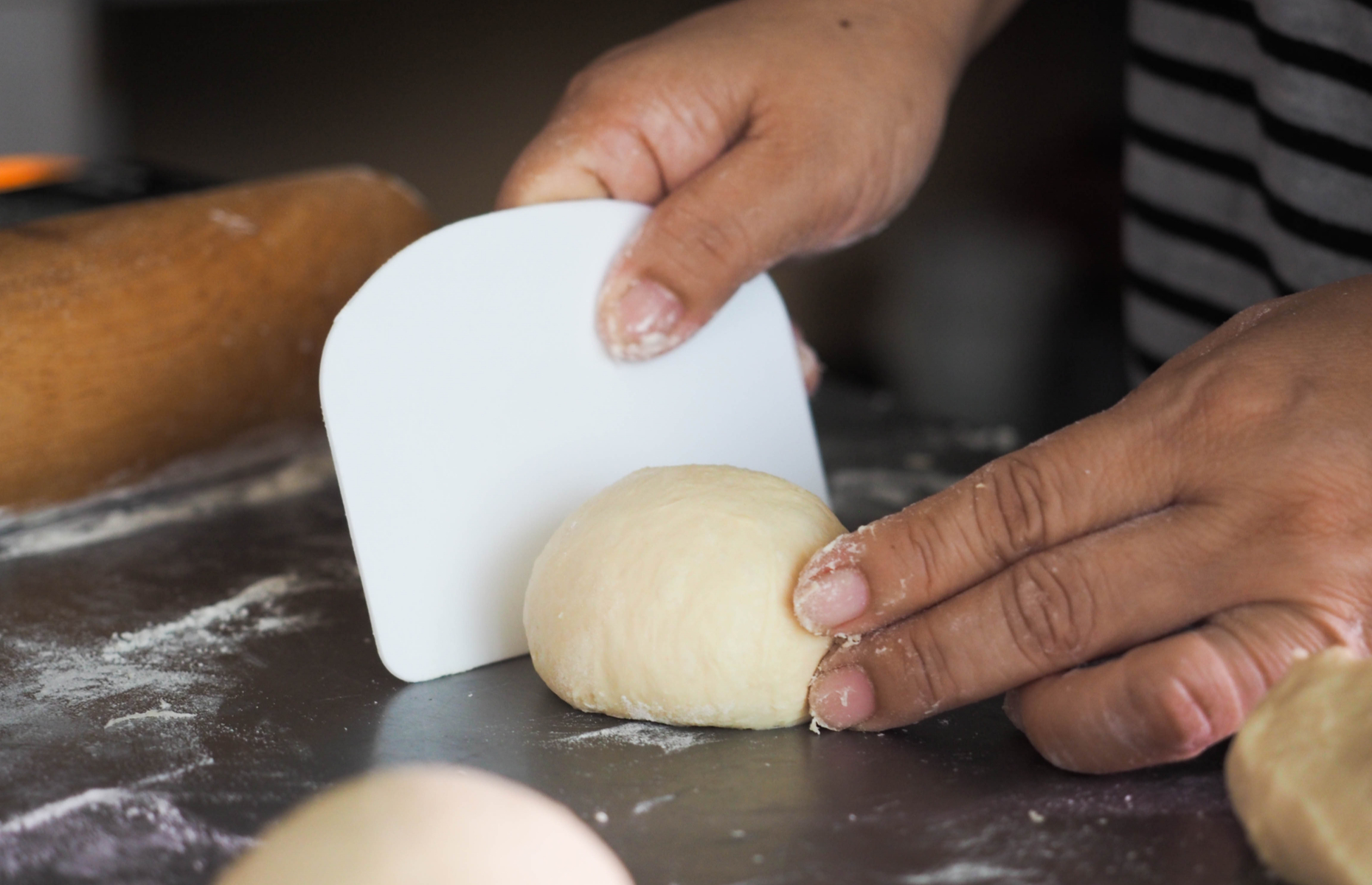 Chaechaebyv/Shutterstock
Chaechaebyv/Shutterstock
Clingfilm/linen towel
If you don’t want to use clingfilm to cover your dough while it’s rising, a linen tea towel will do the job. You need linen as other cloths may leave microfibres on the dough.
Water spray
A water spray, like one you’d used for house plants, is very handy. Spraying the bread as it goes into the oven creates steam and helps to develop a good crust and colour.
READ MORE: How to make homemade pasta
Baker’s lame
If you’re making a split tin loaf or want to make patterns in your sourdough, a baker’s lame, which is basically a razor blade on a stick, could be handy. A Stanley knife will do a similar job.
Proving basket
If you want to bake perfect round loaves, such as sourdough, a wicker proving basket is handy. It allows air to circulate around the dough and give it the shape. Not essential, but traditional.
 Zagorulko Inka/Shutterstock
Zagorulko Inka/Shutterstock
Baking stone
You can just use a baking tray lined with baking paper but a baking stone or pizza stone can be a good investment. It will give you a similar effect to a bread baked in a traditional baker’s oven, where the bread is put onto the brick floor of the oven, so the bread starts baking immediately. If using, put the stone in the oven to heat up fully before adding your dough.
Should I invest in a bread-making machine?
If you make a lot of bread then a bread-maker is worth the investment, particularly for busy, working families. It’s like a mini electric oven with a built-in paddle.
You just put in your ingredients (they come with lengthy recipe books), select your programme and timer from the electronic panel, then the machine does all the work – all the kneading, resting, proving and baking. It’s an effortless way to have fresh bread every day.
Basic machines will just give you white and wholemeal breads, whereas the more expensive models offer a tray where you can add nuts or fruit, and can bake speciality breads such as sourdough. We’ve tested a couple at length and highly recommend the bread-makers from Panasonic and Morphy Richards.
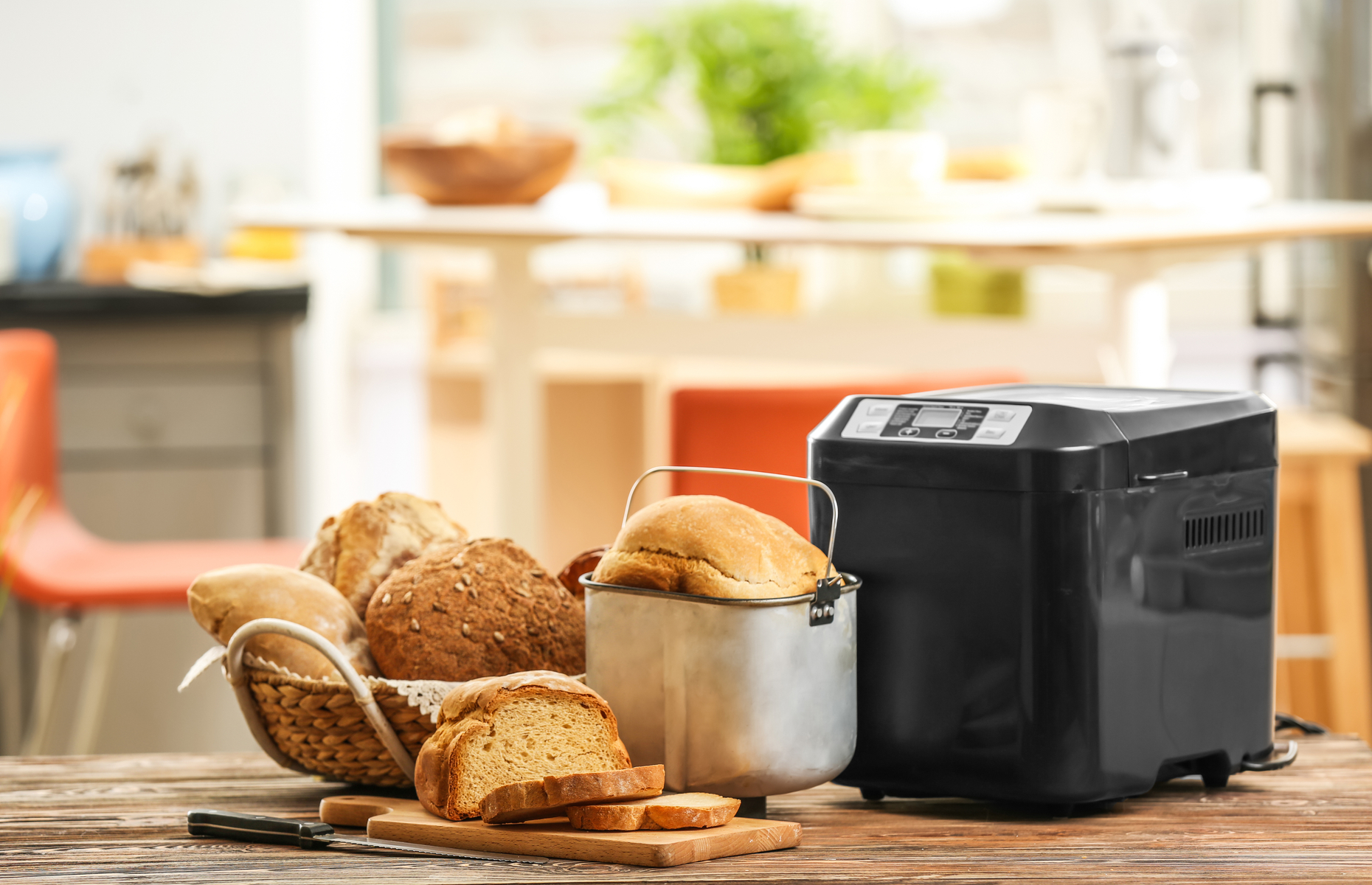 Africa Studio/Shutterstock
Africa Studio/Shutterstock
What are the basic bread ingredients?
There are just four ingredients needed to make a standard loaf – flour, yeast, water and salt. It couldn’t be simpler.
Bread flour
Given that flour is a relatively inexpensive ingredient, it’s worth buying the best you can. Look for organic flours from smaller producers, most of which are available online. Flour is the main ingredient in bread and gives a loaf its individual character.
Strong white flour
Strong white flour is the standard flour used in bread-making. It’s made from varieties of ‘hard’ wheat, which contain high proportions of gluten. Gluten is the protein which helps the dough to expand and rise. It results in a well-risen, springy loaf.
The wheat with the highest gluten content comes from Canada, so check on the pack you’re buying to see where it’s from. You’ll also see flours labelled as bread flour, which may be a blend of different wheats, not just Canadian. As mentioned earlier, they will add their own character to the loaf so try a few and see which white flour suits your taste.
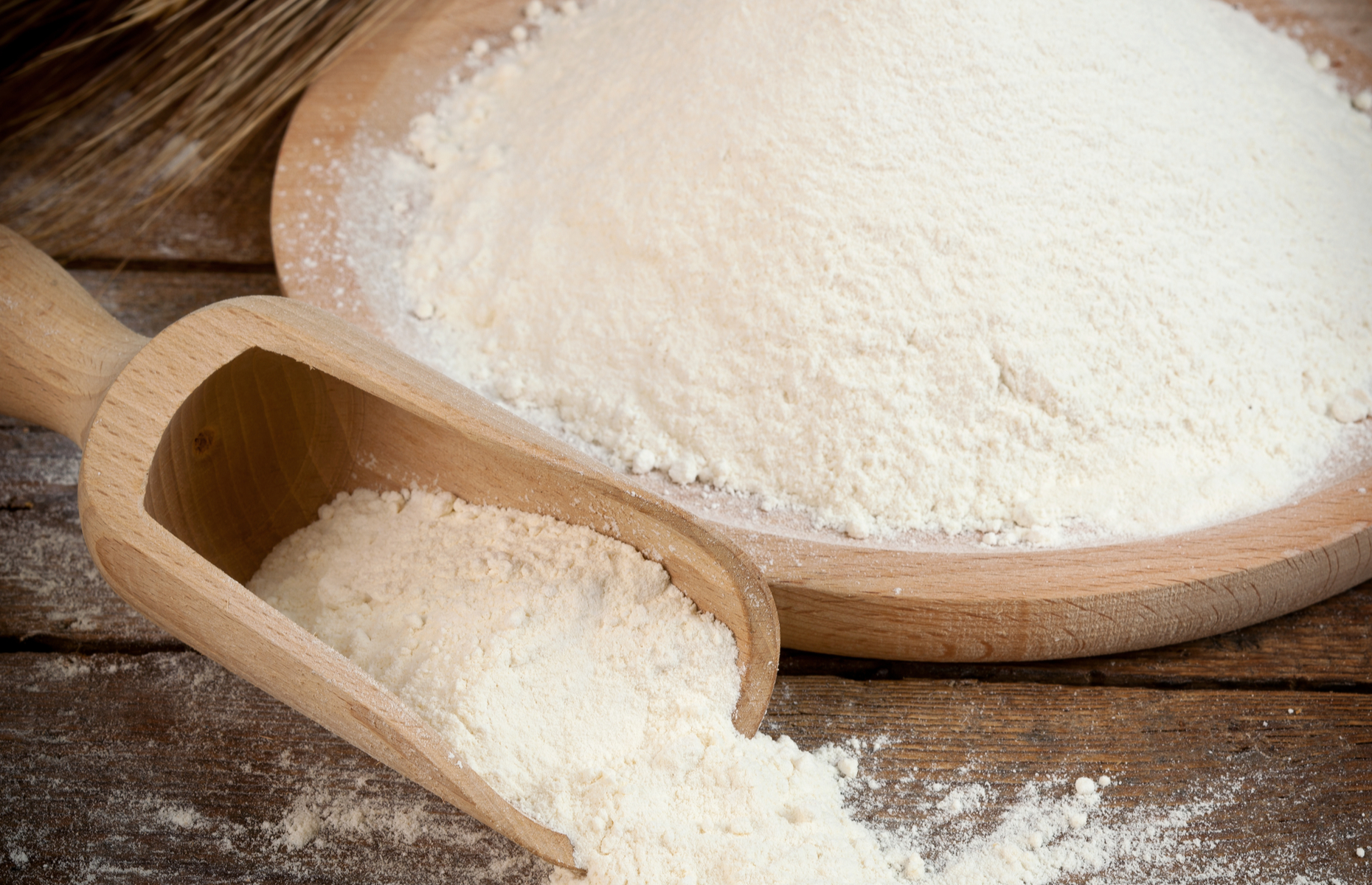 Antonio Gravante/Shutterstock
Antonio Gravante/Shutterstock
Wholemeal flour
Like its white flour counterpart, strong wholemeal is made from hard wheat varieties. Any wholemeal flour is milled from the whole grain, so it will contain the germ and the bran. It is high in fibre (good for the digestive system) and B vitamins. It will give a denser, heavier loaf so it’s often mixed with white flour in recipes to add lightness to the end result.
Stoneground flour
You will also see some wholemeal flours labelled as stoneground, which has been milled between stone rollers rather than modern milling methods. It will be coarser and heavier, even if it’s white flour, than factory-milled flour.
Self-raising and plain flours
These are ‘soft’ flours and not normally associated with bread making. But in some instances, such as soda bread, and some focaccia recipes, you are looking for a different result. Soda bread requires minimal kneading and no yeast, so self-raising flour is perfect. With an Italian focaccia, you want a soft, springy texture which is almost cake-like, so many recipes combine strong and plain flours.
Rye flour
Most often associated with Scandinavian and German breads such as pumpernickel, which have a dense, heavy texture, rye flour combined with white strong flour gives a more rustic loaf with a nutty taste. Rye contains less gluten than wheat flour so you need the combination to produce a well-textured, well-risen loaf.
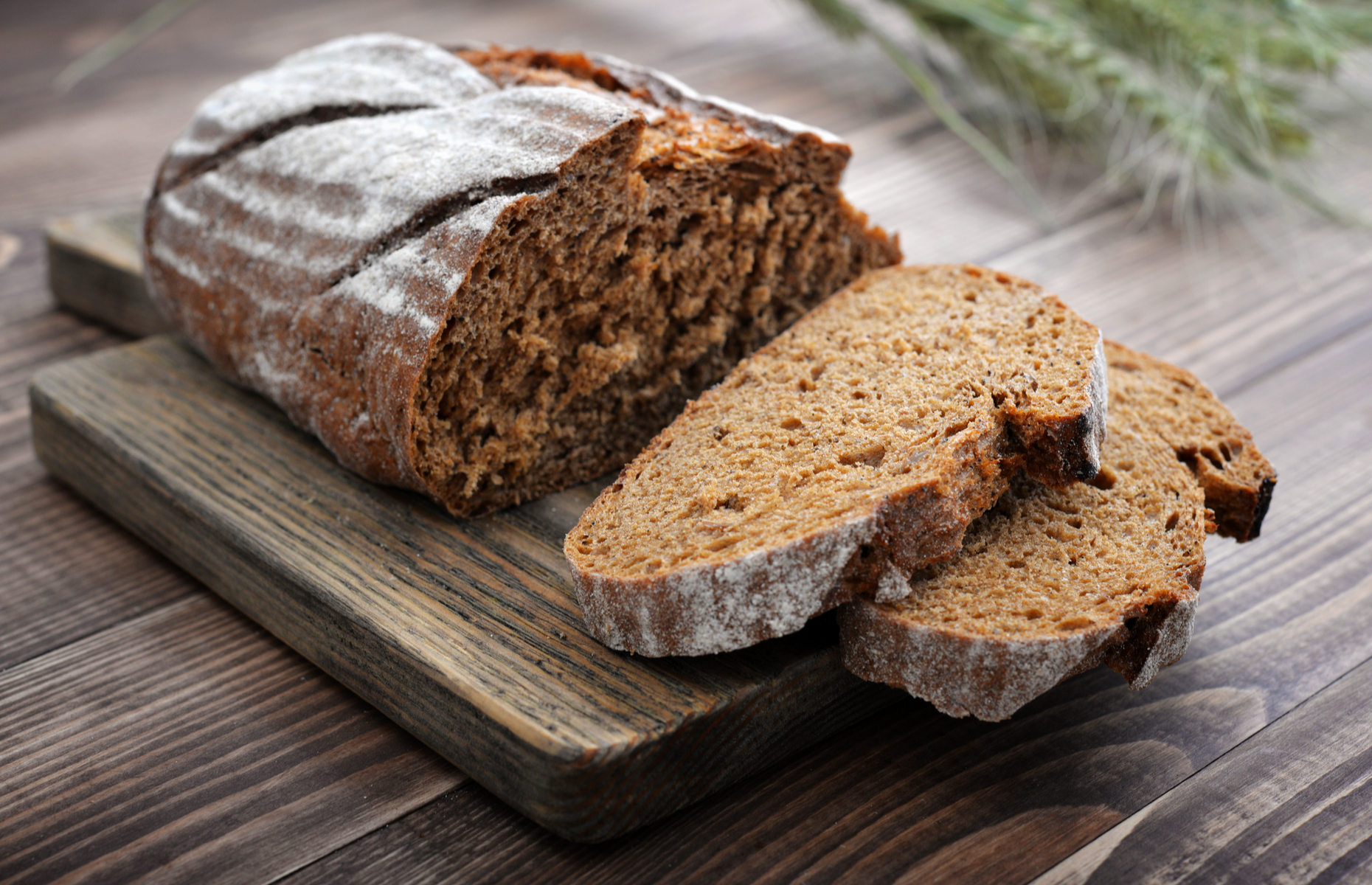 mama_mia/Shutterstock
mama_mia/Shutterstock
Yeast
Yeast belongs to the fungus family and it’s your leavening agent in bread. If used correctly, it reproduces and gives off carbon dioxide to aerate your loaf. Any water added to your loaf needs to be warm, not hot or boiling, as this will kill the yeast.
If you are making a rich dough with fats, such as butter, the yeast will take longer to react. The same goes for higher amounts of salt or sugar. In these recipes, you will need to add more yeast.
Fresh yeast
Fresh yeast may be hard to track down but does add a different flavour to bread. You don’t need to bother mixing it with warm water and sugar to activate it, either. Just crumble it into your flour as if you were making shortcrust pastry. It only has a fridge life of about five days and doesn’t freeze reliably, so you need to buy it when you need it.
Dried yeast
Dried yeast is a grainy yeast found in in sachets. You can just mix it into the flour, although some recipes tell you to sponge it in liquid to reconstitute it. It doesn’t make much difference to the end result. Always check the use-by date. If it’s past it, the yeast is dead and won’t activate the dough.
Easy-blend dried yeast is the one we see most of now on the shelf. You mix it directly into the flour.
As a guide, 30g (1oz) fresh yeast is equal to 15g (0.5oz) dried yeast or a 7g (0.2oz) packet easy-blend yeast.
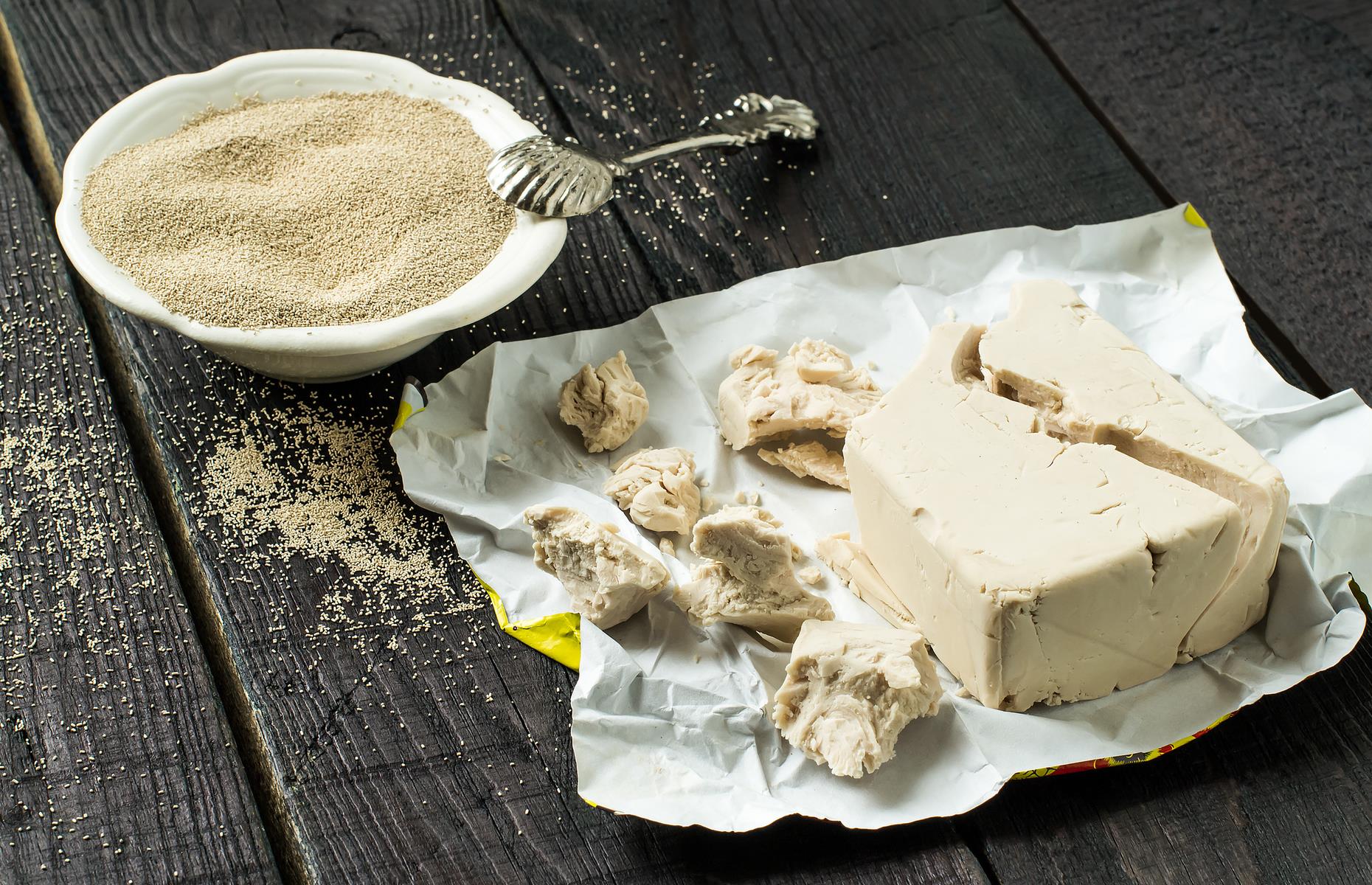 13Smile/Shutterstock
13Smile/Shutterstock
Water and salt
These are easy ingredients! Tap water is perfectly fine – you won’t see a difference in the bread using a fancy bottle of mineral water.
As for salt, just use fine sea salt. It is essential in bread and you don’t use that much of it. Not only does it affect the flavour, but the rising action of the yeast, the texture of the loaf, and the crust. Good bread needs a little salt but use too much and your bread won’t rise properly, so do follow the recipe quantities exactly.
Stages in bread-making
1. Kneading or working the dough
This is your first stage when you have mixed all the ingredients together. You do this to distribute the yeast evenly and to make the dough elastic. By hand, it will take you about 15 minutes. You want the dough to lose its stickiness and become smooth, shiny and elastic.
Push the dough down and away from you with the heel of your hand, pull it back to you with your fingers, then repeat the process. It is much quicker done in a mixer with a dough hook. When it’s ready, the dough should spring back when you prod it with your finger. This shows it is sufficiently elastic.
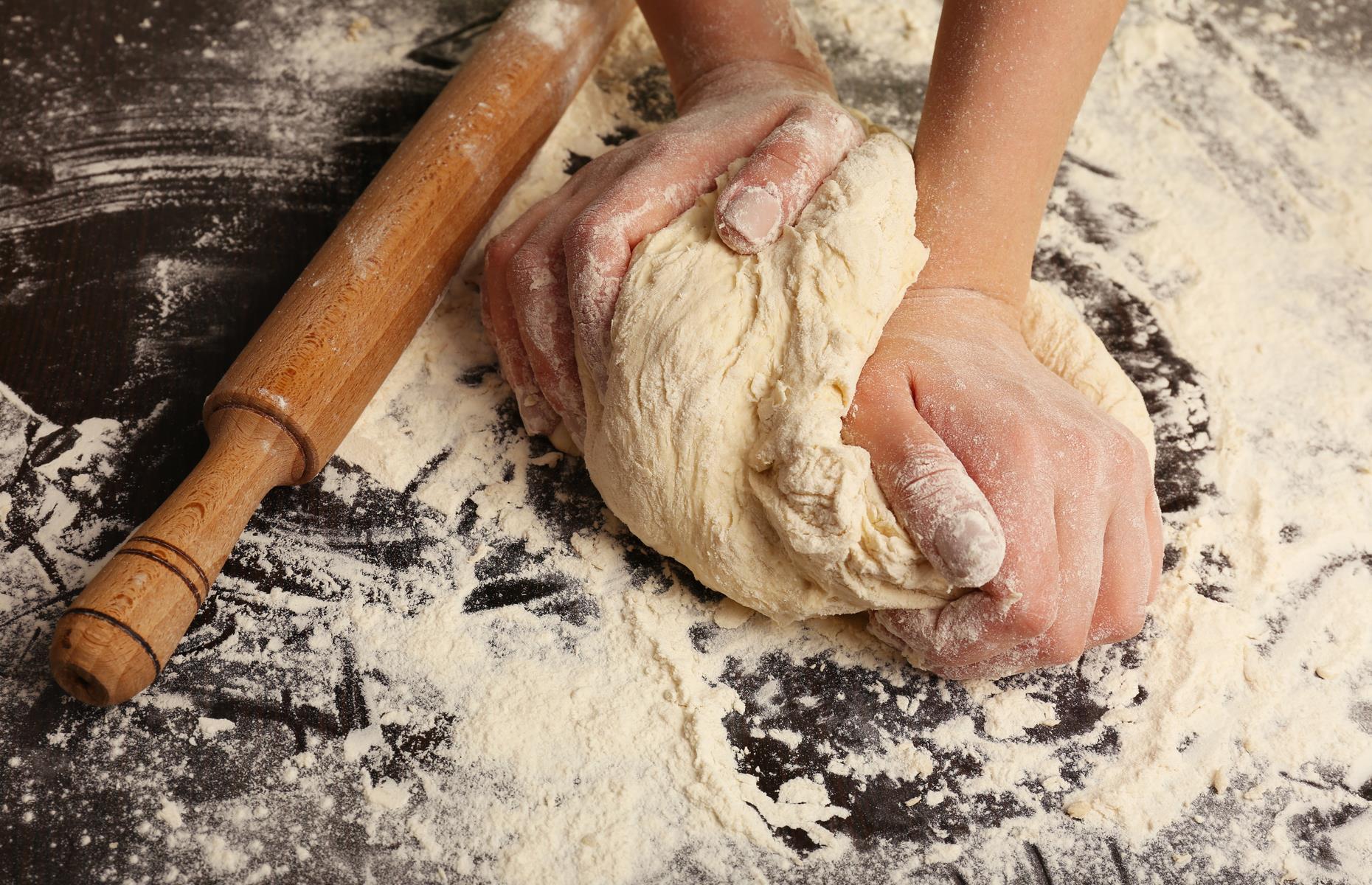 Africa Studio/Shutterstock
Africa Studio/Shutterstock
2. Resting or first rising
Once you have worked the dough into a ball, put it into a lightly oiled bowl and cover it with oiled clingfilm or a damp linen cloth. Leave it in a warm, draught-free spot. The temperature of your kitchen plays an important role in the rising process. If your kitchen is cold, the dough will take longer to rise, so ideally work in a warm kitchen.
Leave it for roughly an hour until it has increased in size by one or one and a half times. This first rising enables the dough to develop its structure and flavour.
Find more brilliant tips for home bread-making here
3. Knocking back the dough
This term makes it sound rather too vigorous than it actually is. You are just re-folding the dough to take out the air which may have formed uneven holes. Gently press down the dough, folding it back on itself until you have formed it back into a ball the same size as it was originally.
4. Proving the dough or second rising
Now you can shape the dough into your loaf or rolls, whatever you are making. You want it to double in size. The second rising gives a lighter loaf. It usually rises quicker the second time because the kneading and first rising has made the dough more elastic. Again, cover with a damp cloth or oiled clingfilm.
 AdangRuj/Shutterstock
AdangRuj/Shutterstock
5. Baking the bread
Bread is baked at a fairly high temperature to kill the yeast. If the oven isn’t hot enough, the yeast would push up the top crust away from the loaf. This is called oven spring. When you’ve put the loaf in the oven, spray it with water from your spray to help develop a good crust and colour.
To check your loaf is ready, turn it out onto a cloth and tap the underside. It should sound hollow if cooked through. If not, return it to the oven then check again after five minutes or so.
Basic bread recipes
Here’s our recipe for a really simple white loaf, which you could also shape into dinner rolls. You just need the four essential ingredients to make it: yeast, flour, water and salt. You can shape it into a free-form loaf, or bake in a 1kg (2lb) oiled loaf tin.
Stir a 7g (0.2oz) packet of easy-blend yeast into 500g (1lb 2oz) strong white bread flour with 2tsp sea salt. Gradually mix in 350ml (12floz) water. Mix together and knead, then follow the steps in the above section.
This loaf needs to be baked at 240°C (475°F/gas mark 9) for around 35 minutes or 20 minutes for dinner rolls.
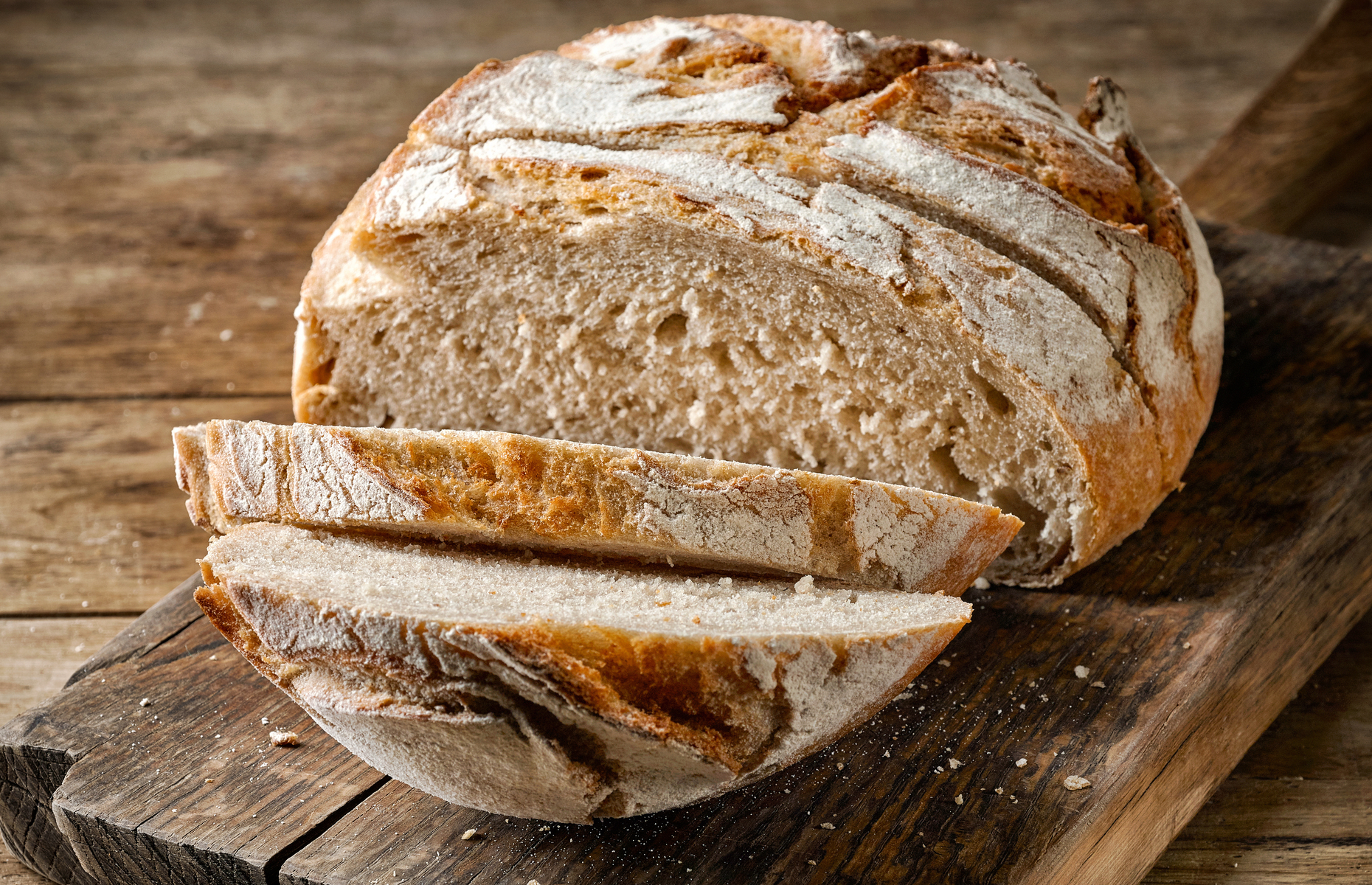 MaraZe/Shutterstock
MaraZe/Shutterstock
More easy bread recipes
Here’s a selection of great ideas for you to try:
Red pepper, thyme and extra mature Cheddar bread
How to make sourdough bread
Sourdough is enjoying a huge renaissance in popularity. Making it in the traditional fashion is very long indeed. The idea is to make a wild ferment starter, or levain, of flour (usually white and wholegrain or rye) mixed with water, but with no commercial yeast.
The ferment is left to attract natural, wild yeasts from the air around us. This allows it to ferment very slowly, which gives it its characteristic robust flavour. The starter, or mother dough, is then mixed into your bread recipe.
READ MORE: 30 super-easy cooking skills everyone should know
You can still achieve that sourdough tang at home by making your own sourdough starter, without waiting for Mother Nature’s wild yeasts. Mix yeast, water and flour together, then leave it covered with a tea towel, at room temperature. Let it sit for up to five days until it is bubbling and smells slightly vinegary.
Sourdough keeps well, freezes brilliantly and makes the best toast.
Get the recipe for simple white sourdough bread here
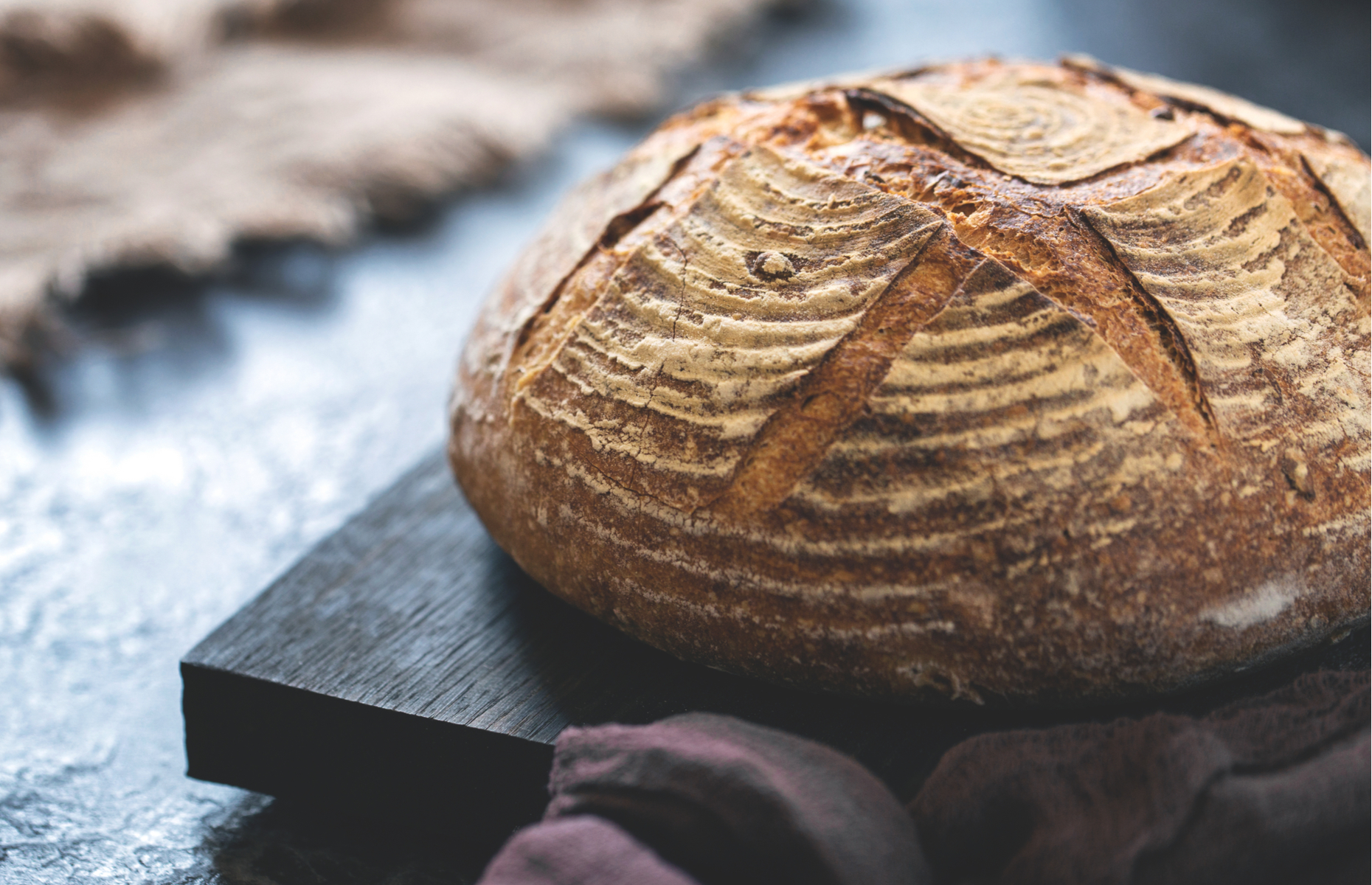 Ievgeniia Maslovska/Shutterstock
Ievgeniia Maslovska/Shutterstock
Speciality breads
Once you’ve mastered the simple art of bread-making, move on to more of a challenge.
How to make ciabatta
One of Italy’s most famous exports is ciabatta, which means slipper in Italian. It’s much lighter than its appearance would suggest and made with a biga, a starter dough, which needs to ferment and helps give that open texture.
Like sourdough, the starter helps the bread keep for longer. Ciabatta is a wet dough so it is much easier made in a mixer than by hand. You’ll need to start the recipe a good 24 hours before you need it, to give the biga time to ferment.
Try our recipe for ciabatta here
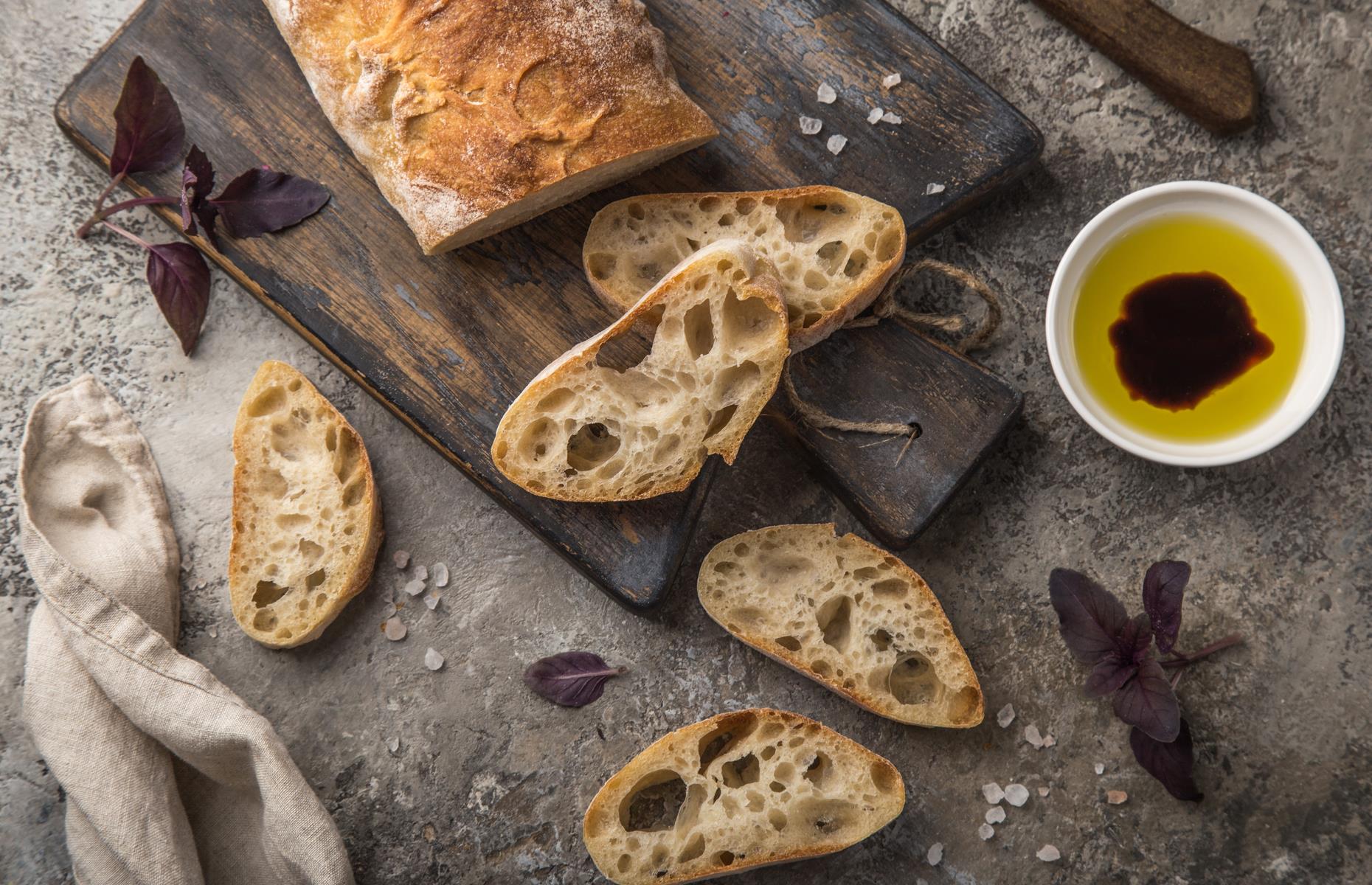 Anna Shepulova/Shutterstock
Anna Shepulova/Shutterstock
How to make focaccia
Another Italian favourite is a focaccia. This large, rectangular bread’s true home is Genoa. At its simplest, it’s just topped with sea salt. But it can become almost a meal in itself with different toppings – you could add cheese, olives, herbs, tomatoes or garlic.
READ MORE: 30 brilliant tips for perfect potatoes
Start with our basic recipe for sea salt and oregano focaccia, then try out the other recipes with more toppings:
Garlic, mushroom and thyme focaccia
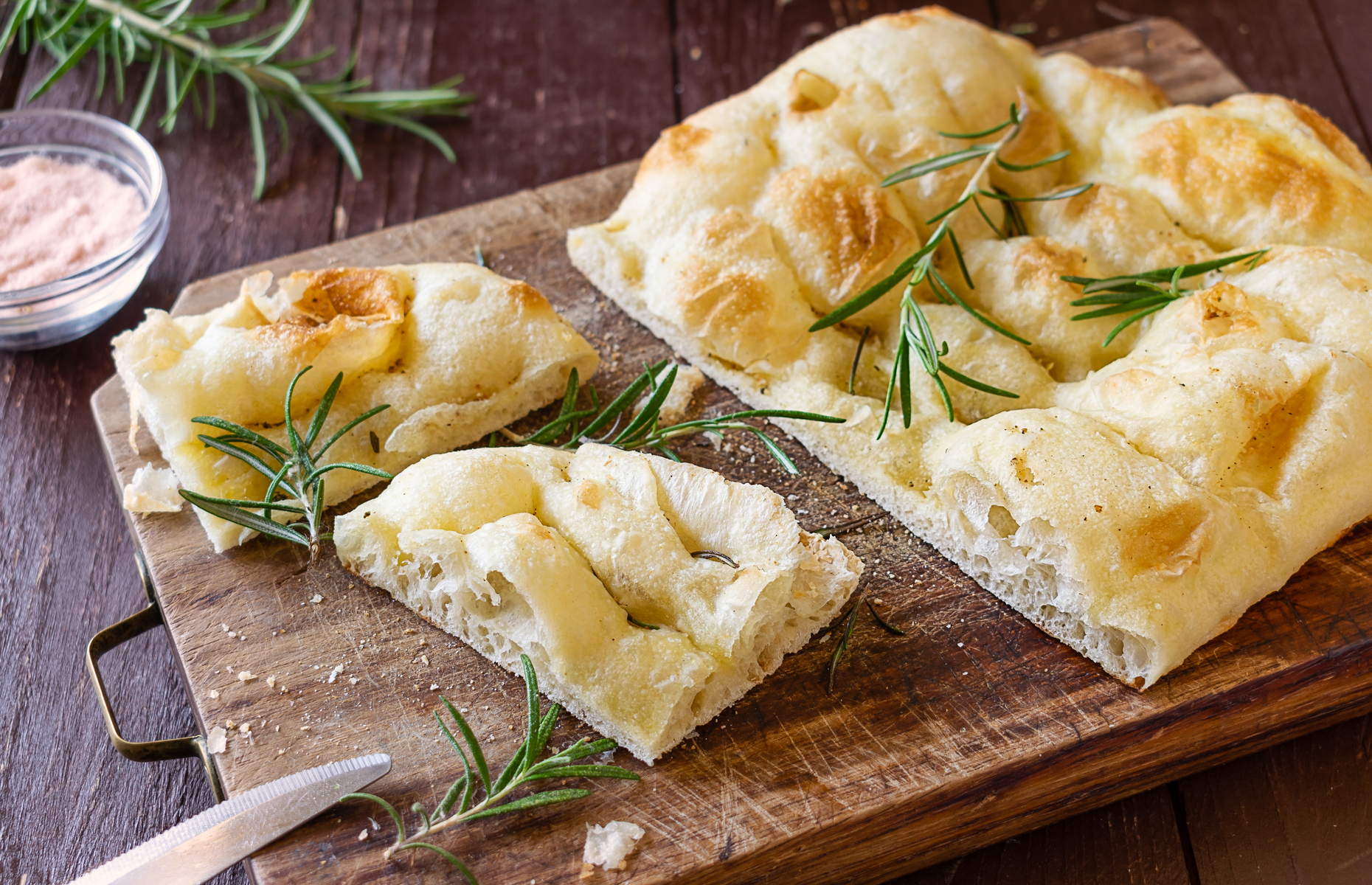 Micaela Fiorellini/Shutterstock
Micaela Fiorellini/Shutterstock
How to make fougasse
From the south of France comes the traditional fougasse. It is sculpted or slashed into a shape which resembles an ear of wheat. It’s more chewy than a focaccia and is often flavoured with olives or vegetables.
Get the recipe for olive and courgette fougasse here
How to make naan
Try our recipe for naan. The Indian flatbread is traditionally cooked in a tandoor oven but work just as well cooked in a frying pan.
Get the base recipe for naan here
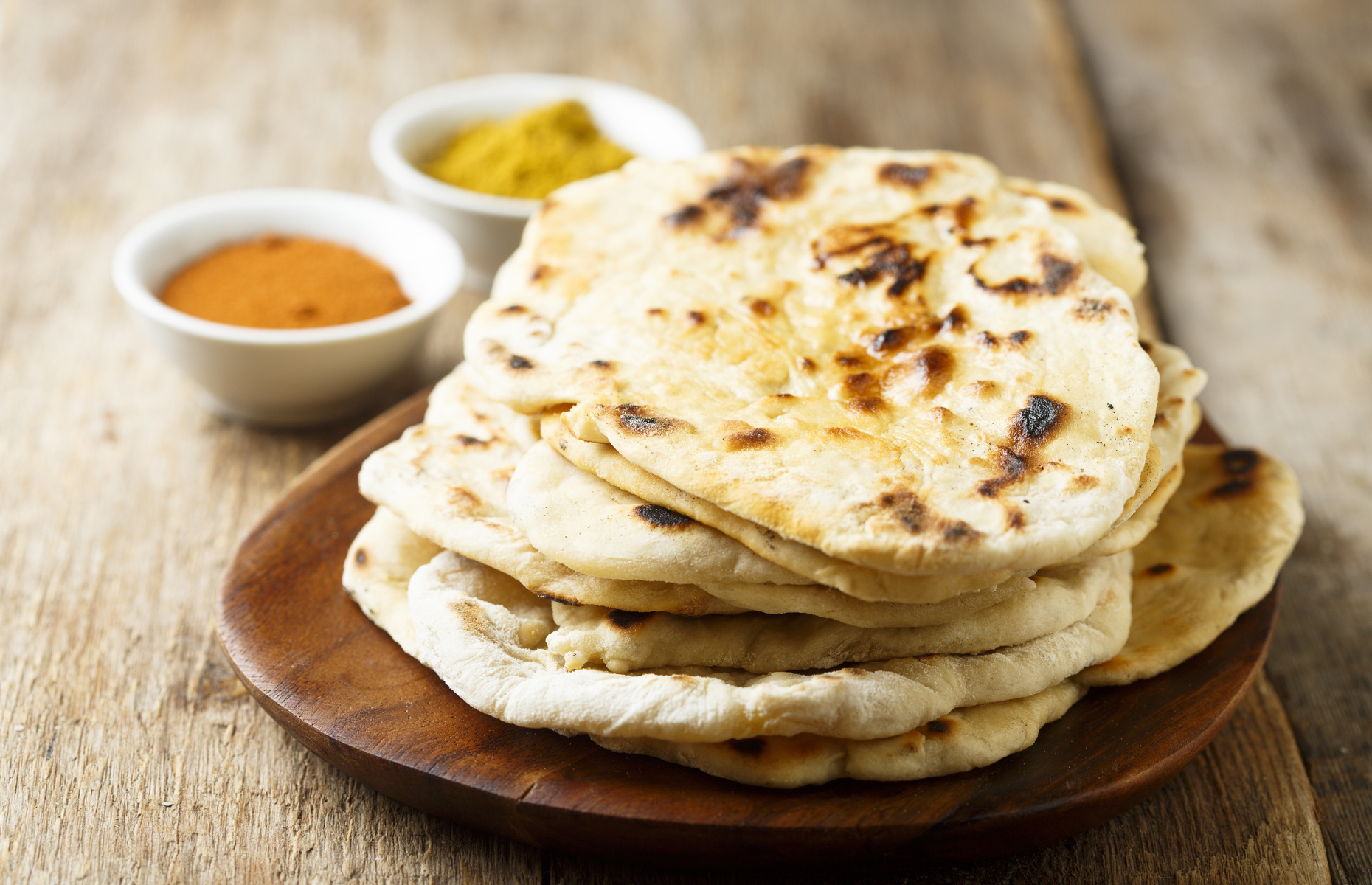 MariaKovaleva/Shutterstock
MariaKovaleva/Shutterstock
How to make enriched dough for sweet breads
Sweet breads, such as cinnamon buns, brioche or hot cross buns, are made with an enriched yeasted dough which can contain butter, eggs and sugar. This means they’ll take longer to rise. The first rising generally takes place without the addition of dried fruit which is mixed in after.
Try out some of our favourite recipes made with enriched yeasted dough:
Sicilian lemon and orange bread
How to make yeast-free bread
Yeast-free breads need the opposite treatment of yeasted breads. You mix them quickly and need to ensure they have as little handling as possible – there is no need to knead!
Examples of breads which contain no yeast are chapattis, paratha and soda bread. Soda bread evolved as the local Irish wheat was very low in gluten so it was impossible to make a standard loaf. The traditional buttermilk was just a by-product of the butter-making but it gives that slight tang to the bread. Indian breads follow a similar path, where the flour was low in gluten so the flatbread style evolved. The joy of yeast-free breads is that they are very quick to make as there’s no rising involved.
Here are some great yeast-free bread recipes for you to try:
Lead image: Pinkyone/Shutterstock
Comments
Be the first to comment
Do you want to comment on this article? You need to be signed in for this feature
